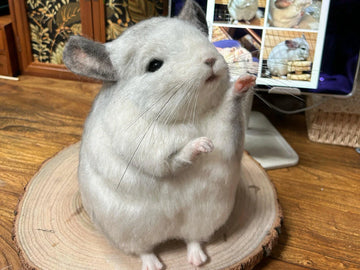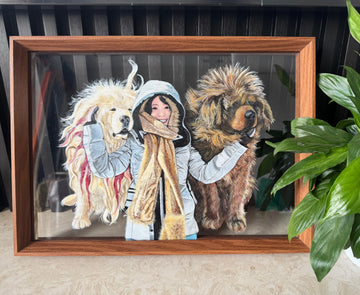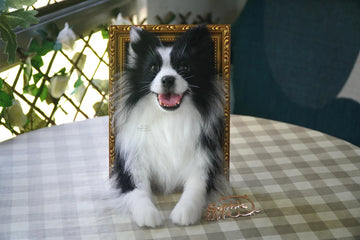Introduction
In the age of conscious consumption, more pet owners are rethinking the kinds of keepsakes they choose to honor their beloved animals. While traditional plush toys still dominate the market, they often come with hidden costs — both to the environment and to the emotional depth of remembrance. By contrast, wool stuffed animal creations are emerging as a sustainable, heartfelt alternative. They embody not only eco-conscious values but also the unparalleled realism of handcrafted artistry.
This article explores why handmade wool felt replicas are superior to factory-produced plush toys, comparing their environmental footprint and their ability to capture the true essence of a pet. The future of pet keepsakes lies in personalization, authenticity, and sustainability — qualities woven into every fiber of a custom wool creation.
The Environmental Cost of Mass Production
Factory mass production has dominated the plush toy industry for decades. While it allows for low costs and wide availability, it comes at a significant environmental price. Industrial-scale production often relies on synthetic fibers like polyester, which are derived from petroleum. These materials are non-biodegradable, contributing to long-term waste in landfills.
Beyond the materials themselves, large-scale manufacturing consumes enormous amounts of energy. Factories depend on heavy machinery, constant electricity use, and international shipping logistics that burn fossil fuels. Each stage — from raw material extraction to packaging — leaves a carbon footprint that continues to grow with consumer demand.
Additionally, mass production often encourages overproduction. Warehouses filled with unsold plush toys become waste when trends shift, creating further strain on the environment. In short, factory-made toys may be cheap, but their ecological impact is costly.
Why Handmade Wool Crafts Are More Eco-Friendly
By contrast, handmade wool creations embrace a smaller, more sustainable model. Wool is a renewable natural fiber, biodegradable and long-lasting. When artists use wool as their medium, they rely on a material that returns to the earth without leaving toxic traces. Unlike synthetic fibers, wool decomposes naturally, reducing environmental harm.
Handcrafting also eliminates the heavy machinery and energy use that define industrial production. Artists often work in small studios, using simple tools like felting needles and natural dyes. This approach minimizes electricity consumption and avoids harmful chemical processes.
Equally important is the issue of waste. Handmade wool keepsakes are typically made to order, ensuring that no excess inventory clutters shelves or ends up discarded. Every piece has a purpose, every creation a home. In this way, handmade crafts not only honor pets but also honor the planet.

Beyond Sustainability: Realism and Authenticity
Sustainability is only part of the story. Handmade wool felt replicas surpass factory toys in another crucial way: realism. Mass-produced plush animals are built from standardized molds and patterns. They may be cute, but they lack individuality. Every toy from a production line looks identical, with no connection to the unique features of a specific pet.
Handcrafted wool pieces, on the other hand, are designed to capture the exact likeness of an animal. Artists study photographs, analyzing fur patterns, markings, and even expressions. Each stitch and fiber is guided by the personality of the pet being honored. The result is a creation that feels alive, with soulful eyes, distinct coloration, and authentic posture.
This realism is what transforms a wool replica into a true keepsake. Owners do not just see a generic plush toy; they see their beloved companion reflected back at them. The connection is emotional, intimate, and deeply personal — something no factory mold can replicate.

The Value of Customization
One of the strongest reasons handmade wool keepsakes are the future of pet memorials lies in customization. Unlike factory toys, which are produced in the millions with identical patterns, each handmade piece is created for a single pet and a single story. This level of individuality is impossible to achieve with mass production.
Customization also reduces waste. When every product is made to order, there are no unsold piles sitting in warehouses, no discarded toys when trends fade. Each wool creation is purposeful, destined for a specific home. This ensures both emotional value for the owner and environmental responsibility for the planet.
More importantly, customization transforms a simple object into a legacy. A hand-felted replica of a family dog or cat becomes more than decoration — it becomes a treasured heirloom, passed down through generations as part of a family’s shared story.
Stories From Pet Owners
Jessica, a young professional, once purchased a factory-made plush toy in memory of her childhood cat. While it was cute, it never felt personal. Years later, she commissioned a wool felt replica. “The difference was striking,” she shared. “This wasn’t just a toy — it was Luna. I could see her markings, her little crooked whiskers. It was like she came back to me.”
Another owner, Mark, chose a handmade wool sculpture for his daughter after their family dog passed away. “It gave her comfort,” he explained. “She could hold it, talk to it, and feel like Buddy was still with her. No factory plush could have done that.”
These stories illustrate the dual power of handmade wool keepsakes: they are both sustainable and profoundly human. They remind us that art is not just about aesthetics but about connection.
FAQ
What makes handmade wool keepsakes different from mass-produced plush toys?
Factory plush toys are made from synthetic fibers, produced in bulk, and lack individuality. Handmade wool creations are crafted with natural fibers, designed for one specific pet, and capture lifelike details.
How are handmade wool products more eco-friendly?
Wool is renewable and biodegradable, unlike petroleum-based synthetic fibers. Handmade production also avoids industrial-scale energy use and waste from overproduction.
How long does it take to create a custom wool replica?
The timeline varies depending on size and detail, but most take several weeks. The process involves studying photos, layering wool, and felting details until the pet’s likeness is captured.
How should wool keepsakes be stored and maintained?
They should be kept in cool, dry places, away from sunlight. Displaying them in glass domes or acrylic cases helps preserve them. For more detailed advice, see our care and maintenance guide.
Are wool keepsakes good gifts?
Yes. Because they are personalized, they make meaningful gifts for birthdays, adoption anniversaries, or as comfort for friends who have lost a beloved pet.
Conclusion
The future of pet keepsakes does not lie in factory shelves filled with identical plush toys. It lies in the careful hands of artisans who create sustainable, lifelike tributes from wool. Handmade keepsakes embody both environmental responsibility and emotional depth, offering something that mass production can never replicate.
By choosing eco-friendly, customized creations, pet owners are not only honoring their animals but also choosing a future where memory, authenticity, and sustainability coexist. In every thread of wool lies a story, a bond, and a promise: our pets will always remain part of us, cherished forever.





